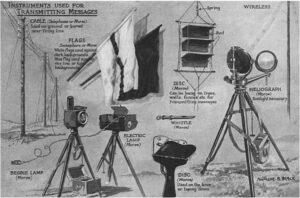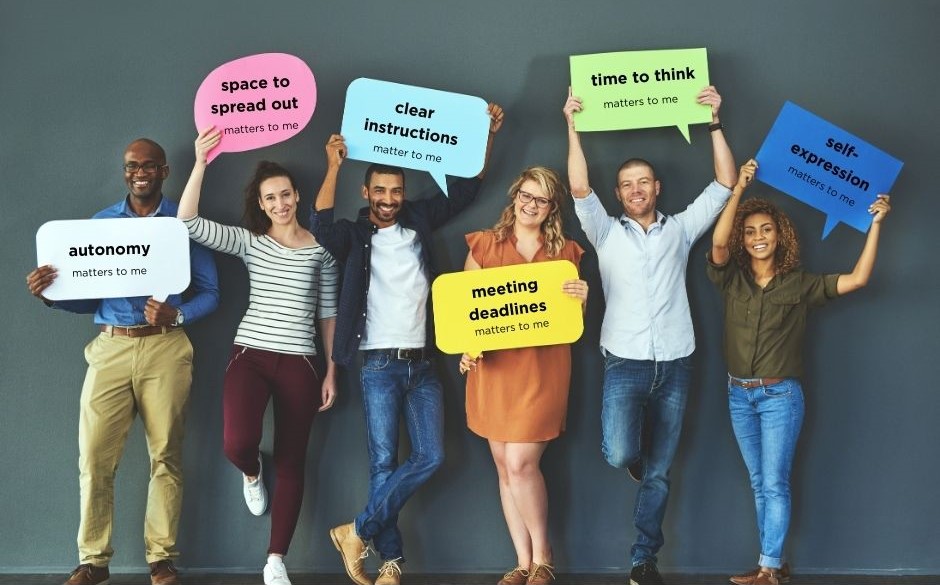Looking at the Anzac legacy through the lens of team communication

We have the legendary battles of World War 1 to thank for the emergence of Australia’s team identity, the Anzacs of Gallipoli in particular.
What role did communication play?
One factor attributed to the disastrous outcomes of the Gallipoli landings was the rapid loss of contact between the troops when the rugged terrain forced them to split into small groups.
In the dark.
Scrambling up the cliffs.
With no maps or battle plans.
What they lacked in support from their leaders, the Anzacs made up for with a concentrated, determined energy.
That’s what got them up and over and into legend.
How can 21st century leaders generate and channel that kind of energy with today’s workforce?
The answer is in the Communication Energy Equation.
It’s about looking at communication as the energy, the life force that invigorates teams.
Because teams need energy to move, to act, to have an impact.
Energy is what is released when entities interact. That’s how we get sound, warmth, light, smell, sensation, movement and change.
Sound energy
Humour me and clap your hands once.
I bet that small burst of sound energy sounded lonely and ineffective.
Now, imagine you’re in a theatre and it’s the end of the performance. Everyone around you is clapping too.
That sound energy has soooo much more impact, yes?
It reverberated because acting together we release powerful energy.
The performers are in no doubt about how much the audience enjoyed the show.
Communication energy
I’ve spent a lot of time working with scientists, so naturally I found myself consulting a couple of famous ones to help me explain communication energy.
Einstein declared that energy is E=mc2 – or the potential energy of an object is equal to its size, times its size.
Newton’s second law of motion says F = ma, or that the force on an object is what will make it move faster and faster.
If the force is weak and the object is heavy, it takes ages to increase the speed.
But if the force is strong and the object is light, then it will move a lot faster very quickly.
So how do you optimise the potential energy to take your team where you want them to go?
How do you generate a force that is strong and a team that is nimble?
By applying the Communication Energy Equation: E + E + E + E = empowered.
Pentland’s key elements of effective team communication
Professor Alex Pentland and his team in the Human Dynamic Lab at MIT identified what they believe to be the three key elements of effective team communication:
- Energy
- Engagement
- Exploration
And if we add Equip to the mix, you’ll have an even more effective team.
Energy (frequency + volume)
Let’s look at energy.
The charge of the young Anzacs up the cliff face and the charge of the lighthorse brigade so often represent that energy of our youthful identity.
In business, energy is the frequency and volume of interactions.
The greater the frequency and the stronger the volume, the more energy your team will have.
If you want more energy from your team, you have to communicate effectively more often.
But there’s a tipping point – too much too often and the energy will have nowhere to go. You’ll all become frazzled and explode or implode.
(Too much talking and not enough work getting done, as my teachers always seem to say to me!)
Legendary leaders understand the energy ebbs and flows of their people and the interactions of those people.
Think of hydropower and dams – like the Snowy Hydro, built in post-World War 2 from the sweat and determination of the hundreds of displaced and willing migrants who came to Australia to start their lives over after that war.
And like the Snowy Hydro, you’ve got to get the levels right of the inflows, the outflows and storage – the potential energy – for it to be a power for good, rather than a flooding force of destruction.
Awareness – of the self and others – is a key leadership skill.
You have to know who you are leading and how they might respond to your direction.
Self and team awareness activities like True Colors profiling, are extremely valuable.
Legendary leaders recognise the differences between how team members operate and interact, to harness and channel that energy.
Engagement (energy distribution)
A military engagement is a combat between two forces, like the Anzacs and the Turks.
In organisations, engagement is the distribution of energy.
Legendary leaders keep a check on that activity and interactivity to make sure it’s shared evenly.
Developing some rules of engagement with your team is important, so everyone invests in the outcomes.
Some of these rules or guidelines might include:
- The type of interactions – how you communicate, e.g. by email, meetings, sharing documents and cloud-based project management tools, video conferencing, etc.
- How often do you consider necessary and reasonable for the team to communicate – weekly, daily, monthly?
- What protocols will you put in place around the communication to support it?
- Can you stick to a set time for every meeting and agree to always start on time? (Just one meeting per day starting 10 minutes late can add up to almost an hour of lost time every week and a whole week by the end of the year. None of you will get those 40 hours back).
- Does everyone have to attend every meeting? Who has the capacity and capability to coordinate the communications and chair the meetings?
- What’s a reasonable turnaround time for responding to emails, and how long can emails be before they become attachments or phone calls?
- How will technology be welcomed and used?
Legendary leaders have these conversations so everyone understands what’s expected of them and the team.
Exploration (external interactions)
Like the Anzacs crossing battle lines into unknown territory, this is when individuals interact outside the team so they can bring back intelligence, news, ideas, knowledge, methods, and skills to enrich the team – to make what you’re doing even better, faster, more efficient, more profitable and rewarding.
Exploration is about encouraging your people to engage with other teams in the company and collaborate with peers from other organisations.
Networking is a key skill for exploration. Don’t assume that all your team members are willing and able to network effectively.
Observe their reactions when you present exploration expeditions to them, and coach them or provide training if they are reluctant to go out on hunting and gathering missions.
You want to build up their confidence to venture beyond the team horizon.
That includes online networking, via LinkedIn and other professional and technical forums.
Participating in online discussions also activates the exploration element and returns value to the team.
Support your team’s professional memberships. Encourage them to join special interest industry groups. You could pay for their memberships, or allow them to leave early to attend a committee meeting.
It’s something you can add to your rules of engagement – how team members share what they’ve learnt from going to meetings, conferences, and training, and from researching trends and opinions.
Another key competency for exploration and external engagement is public speaking.
Sharing your team’s expertise with an audience is another way to attract conversations about what you’re doing with people who have similar interests but different approaches.
Build up your allies and collaborations by putting your team’s efforts under the spotlight to be noticed.
Share the responsibility of leading team meetings, so everyone can practise their skills and boost their confidence.
Equip (to energise + engage + explore)
The fourth element I’ve introduced to the Communication Energy Equation is equipping your team so they can generate the energy, engage with each other and have the skills and confidence to go out and bring back new learnings.
Equip them with these 5 communication essentials.
1. Collaboration tools – the technology and opportunities to interact with each other, no matter where they are.
Offer a range of communication options so everyone in the team can communicate in ways that best suits their personalities, their needs and their job functions, while meeting the team’s goals and commitments.
(If you think team communication is tough today, spare a thought for the soldiers of WW1 – how would you cope with just carrier pigeons and megaphones?)
2. Protocols and guidelines – team harmony is most inspiring when everyone sings from the same song sheet.
When everyone knows and agrees to what the team and the company deem as appropriate behaviour for communication, it’s easier to keep the team in tune.
- This is what is expected to happen before, after and during meetings…
- This is what’s acceptable in a written report…
- This is what we do after we go to conferences…
3. Skills and capability – to do their current job and to develop their abilities to do future jobs.
Audit their job skills and see how they align with the elements of energy, engagement and exploration.
- Are their writing skills up to scratch?
- Do they know how to use the video conferencing platform you’ve chosen?
- Can they chair meetings efficiently?
- Are they confident networkers?
- Do they know how to deliver effective presentations?
- What extra training will they need?
Talk to them about their ongoing communication skills development.
4. Team skills – observe your team working together and model the team behaviours you want to see, such as effective listening and giving feedback using positive language.
What are they like with negotiation and conflict resolution?
Do they know how to behave with good grace when they don’t get their own way?
Being able to trust, show empathy and share are core strengths of a good team player.
Be sure all the members of your team know how to play nicely.
5. Permission and encouragement – to release, transfer and transform the energy.
Be clear about your expectations as their team leader. Let them know where the boundaries lie and how flexible they might be.
Encourage them to interact with each other, to get involved with their professional associations, make it possible for them to be the best they can be.
Which would you rather:
Staff who say ‘I didn’t know I could’…
OR… I’m so glad I could!
Anzac Day April 25 is when Australians pause to reflect on the efforts of our first national team, a youthful team representing the energy of their country.
Today, I hope you’ll also remember the Communication Energy Equation so your team can be heroes too, but better prepared, equipped and empowered to succeed.
This post is dedicated to my dad, Robert (Bob) Davson, an Australian Navy Vietnam veteran and a legendary man in my heart.
The image is from https://moseley-society.org.uk/wp-content/uploads/2016/04/Lieutenant-Baron-Collingwoode-Seymour-Underhill-1.pdf
If you’d like to energise your team’s communication…



